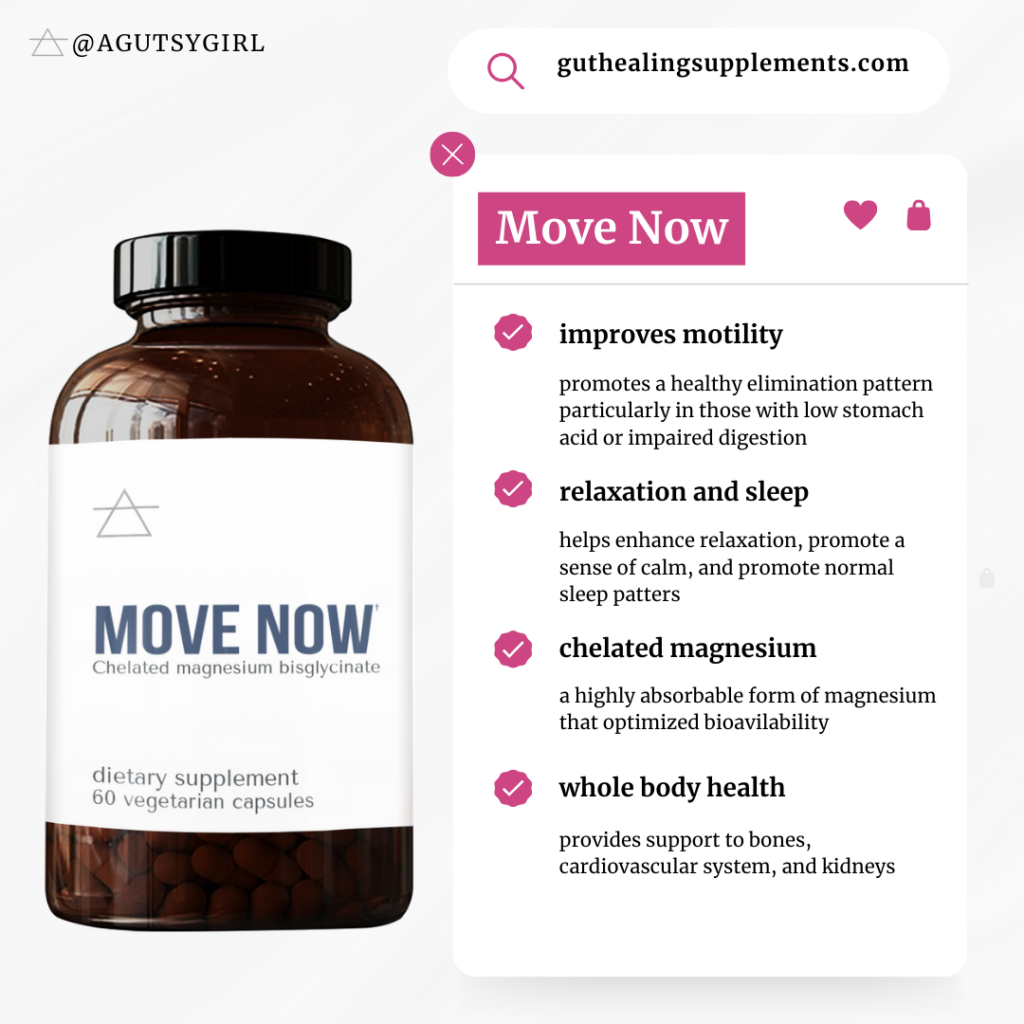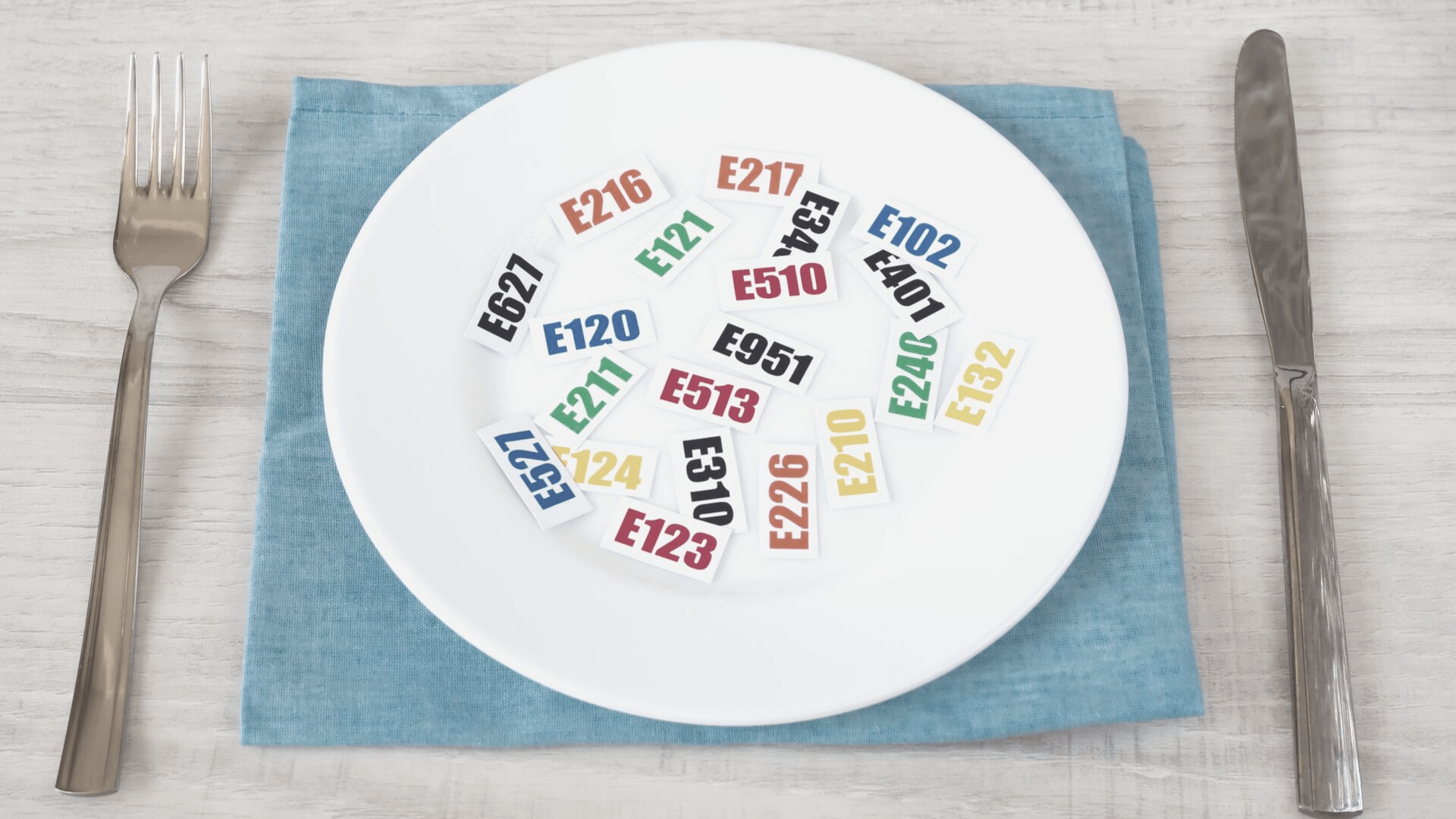This is another short, bite-sized podcast episode dedicated to all things constipation, magnesium, and the difference between chelated vs non chelated magnesium.
This is an ad-free website as of March 7, 2025. [Read why HERE.]
To make a contribution to help us keep this website ad-free, click HERE. Thank you!
You may be wondering, what the heck is chelation? And that’s fair. It isn’t something you hear about everyday.
But it is a concept that is crucial when thinking about supplementation, especially for those of us with Gutsy issues.
Before digging into magnesium and chelated vs non chelated magnesium even further, listen in to this bite-sized podcast episode.
Subscribe Today:
Apple Podcasts | Spotify | iHeart Radio | RSS
Resources
- Move Now (magnesium supplement)
- The Gutsy Bundle
- Diarrhea vs Constipation
- Bristol Stool Chart
- Master Guide to Prokinetics
- Intestinal Movement Formula
- Constipation Hack Series {on YouTube}
- Types of Magnesium {Your Master Guide}
- NIH Stat
- Elvis Presley stat
- Guthealingsupplements.com
Don’t Miss These Thoughts
- What is constipation? + What are some constipation stats?
- A Gutsy Girl’s Top 5 constipation hacks (+ 1 for desperation)
- What is magnesium + why is it so important?
- Repercussions of having low levels of magnesium?
- What are the different types of magnesium?
- Chelated vs non chelated magnesium
Are you ready to dig in for even more?
We have it for you!
Chelated vs Non Chelated Magnesium [+ Top 5 Constipation Hacks, Episode 59, Bites #11]
Click HERE to save this information regarding chelated vs non chelated magnesium for later.

Magnesium At a Glance
Magnesium is a critical vitamin, and when I say critical I mean it.
It is known as an essential mineral, meaning that we can’t make it on our own and it has to be taken in by our diet or supplementation.
Magnesium helps enzymes in our body that run chemical reactions work and is involved with over 300 biochemical reactions! Talk about diversity.

Some of its specific functions include:
- part of glycolysis- first step of cellular respiration (the way we turn glucose into cellular energy)
- makes up structure of bone- crystal structure in bone tissue matrix
- helps to relax muscles
- transports Ca and K- making it key player in muscle contraction, heart muscle contraction, and nervous system regulation
- electrolyte balance
- stress management
- mood regulation
- synthesis of DNA and RNA (a HUGE deal)
ATP Production
One of the most important parts of Magnesium is its crucial role in ATP production.
If you are unaware, ATP is the energy that our cells function on that is formed during cellular respiration.
Magnesium not only functions in the cellular respiration process, but it activates ATP by binding with it.
So it is no surprise that an adequate magnesium intake is associated with higher energy levels.
Not only does magnesium help with energy but it also is required in order to form both DNA and RNA molecules.
These molecules are sometimes called the “blueprint” for our body, as they code for all other protein synthesis that occurs. Without them, the human body physically would not be able to operate.
Magnesium Deficiency
Now that I’ve shown you just how important magnesium is, would it be a bad time to mention almost 68% of us are deficient in the United States?
That’s right. Almost 2/3 of US adults are lacking in this critical nutrient.
This boils down to many different reasons but some of the main ones are… GI disorders and stress. Bet you’ve never heard of that combo before. Joking.
In addition to GI issues, there is also just less magnesium in our diet in a whole.
Our generation’s diet has about 80% less magnesium than it than past generations.
Our food is becoming increasingly more processed, and increasingly less nutrient dense. More processing leads to more nutrients being removed from the food itself.
People who eat a Western-based, poor diet, like many of us, are taking in less than half of the recommended intake of 320-420 mg a day. Not only is our diet worse, but our water actually contains less minerals as does our soil. A bit of a killer combination.
Other risk factors for magnesium deficiency include:
- high alcohol consumption
- chronic stress
- diabetes
All of these can further decrease the magnesium that can be absorbed.
Unfortunately, low magnesium is not only linked with short-term consequences but it can lead to much more serious issues down the road.
Low magnesium has been associated with an increased risk for heart disease, osteoporosis, and type 2 diabetes.
You may be asking yourself, well what do I do about this?
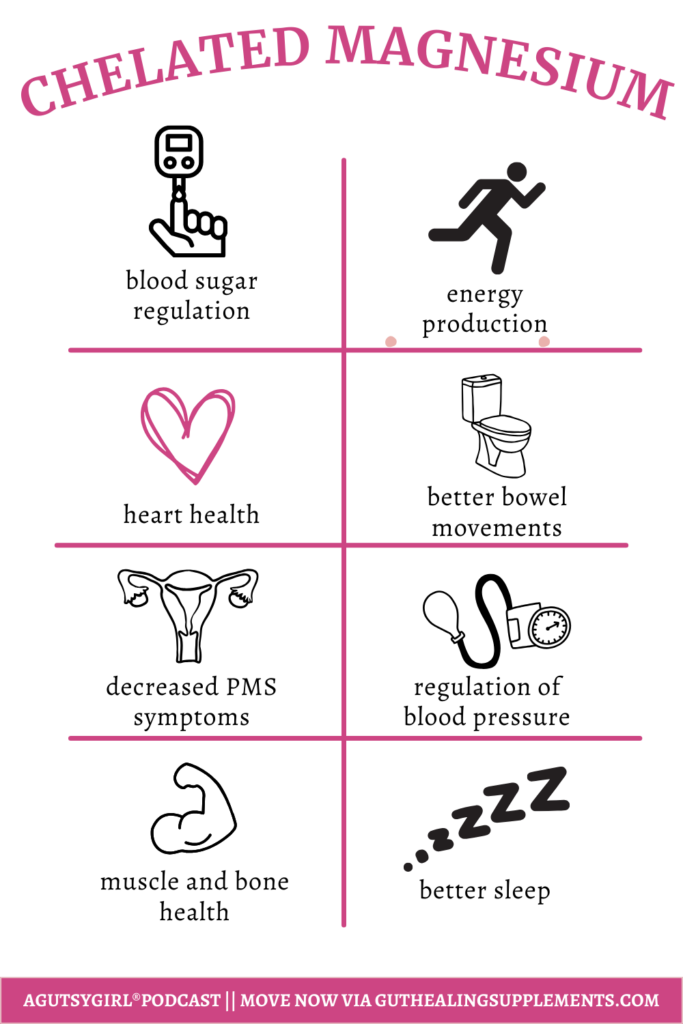
Daily Needs: Increasing Low Magnesium Levels
You can go about increasing magnesium in two ways, both of which are relatively simple
- up the magnesium rich food sources in your diet (dark greens, nuts, seeds, legumes, whole grains)
- turn to magnesium supplements
There isn’t a wrong way to go about it, however, it can be hard to reach the recommended intake by food alone.
Eating a healthy diet can certainly increase your micronutrient intake all around, but it can be hard to target certain ones.
A combination of diet and supplementation may just be the key to reaching the necessary levels.
Many people turn to common supplements to ensure they reach adequate levels.
While this is all fine and great, many supplements actually aren’t super well absorbed in your gut, and can not be as powerful as intended. That’s where chelation comes in.
Chelated Micronutrients and Their Benefits
A chelated micronutrient is simply a mineral that has an added bond that attaches it to organic compounds, often an amino acid (a small segment of protein).
This creates a “coating” around the mineral that helps to protect it from reacting with the external environment. This chelation process more closely reflects natural minerals.
As we know, nature does it best.
Minerals that are not chelated contain no organic components and lack the additional bond to an organic molecule. You may recognize a few of them, as they make up the majority of micronutrients used in supplements. These are inorganic, meaning they lack the organic carbon chains that chelated molecules have.
Chelating minerals has many benefits that make it appealing for dietary supplements.
Chelated minerals are easier to pass through the intestinal wall which makes them more readily absorbed. The easier passage allows more to actually be taken in by the lining of our intestines and pass into the bloodstream.
Chelated minerals are also less likely to react with the external environment inside the body, as they have a neutral charge. They are not attracted to other compounds, which could potentially damage the nutrients and take away from the overall absorption.
One of the most essential aspects of chelation, at least on this page, is its ability to be easier on the gut. What could be more Gutsy than that?
Since chelated micronutrients stay bound to their proteins when passing through the stomach, they are less likely to release prematurely and cause GI symptoms. This could be anything from nausea to abdominal pain.
Many chelated supplements utilize the amino acid glycine, as it is one of the smallest. Its small size makes it better at navigating through the digestive tract.
Be aware that some micronutrients actually can not be chelated because of their individual properties. They are still entirely fine to take, they just won’t have those added benefits associated with the amino acid bonds.
Chelated Magnesium
There are many different forms of magnesium, as it is a very reactive metal ion that binds easily.
Some common forms you may see are:
- magnesium citrate- helps with bowel movements, one of the most easily absorbed, digestive support (citric acid + magnesium)
- magnesium oxide- not easily absorbed, temporary GI symptoms like heartburn or constipation, low bioavailability (oxygen + magnesium)
- magnesium chloride- can increase gastric secretions and help with GI issues, capsule and sometimes topical use for sore muscles (chloride + magnesium)
- magnesium glycinate- aids with sleep, energy, and relaxing (glycine + magnesium)
- magnesium sulfate- constipation and muscle relaxant (sulfur + oxygen + magnesium)
- magnesium malate- lacks laxative effect, mainly for absorption purposes but potentially helps with chronic conditions (malic acid + magnesium)
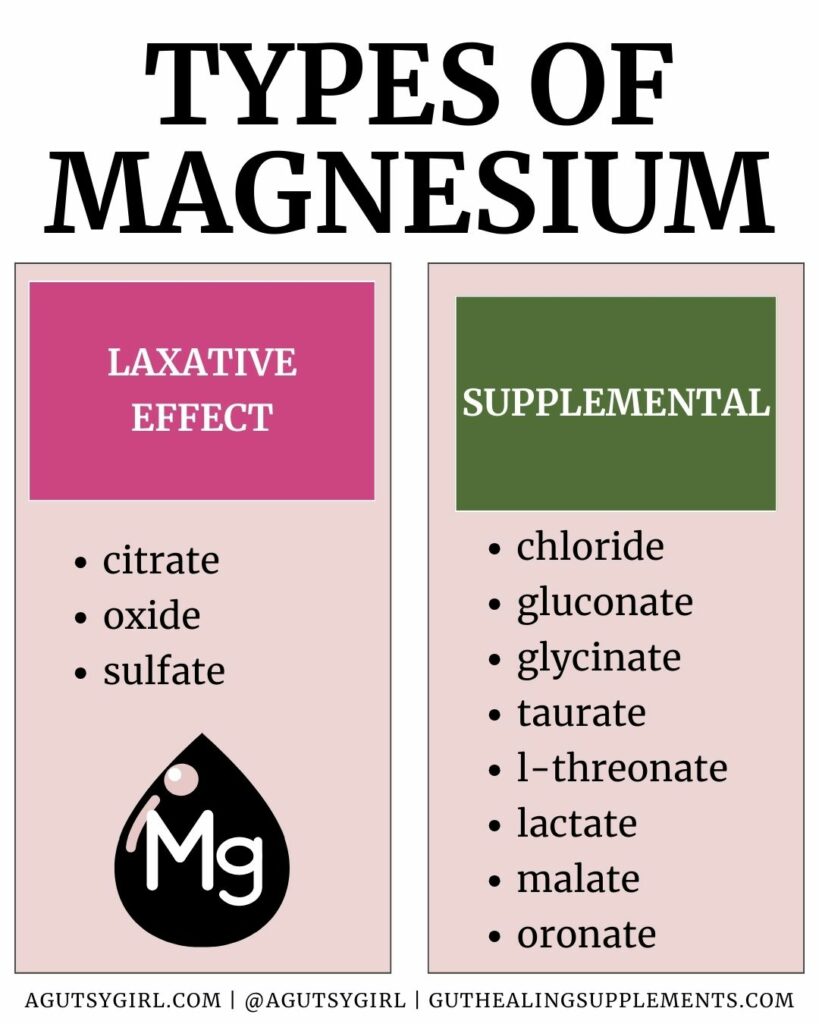
All of these forms have their specific uses and are bound to different compounds.
However further chelating these molecules can give them even more added benefits.
Move Now: Chelated Magnesium
In the A Gutsy Girl supplement line we offer a product centered around magnesium called Move Now.
This supplement contains chelated magnesium glycinate, otherwise known as magnesium bisglycinate.
Magnesium bisglycinate is one of the most readily absorbed forms of magnesium and is so incredibly easy on the GI tract.
Its chelation helps bump up the absorption value and reduces interaction with other nutrients.
Other benefits of chelated magnesium include:
- muscle and bone health
- heart health
- energy production
- blood sugar regulation + prevention of type 2 diabetes
- decreased PMS symptoms
- regulation of blood pressure
- better bowel movements

This particular product also helps improve sleep quality.
Magnesium glycinate both relaxes the muscles and can calm down your mind.
It also encourages a healthier circadian rhythm which can help you both fall asleep and stay that way.
This not only positively impacts your energy levels but can also increase your memory.
It is recommended to take this supplement right before bed to optimize its benefits. I take it every single night before bed.
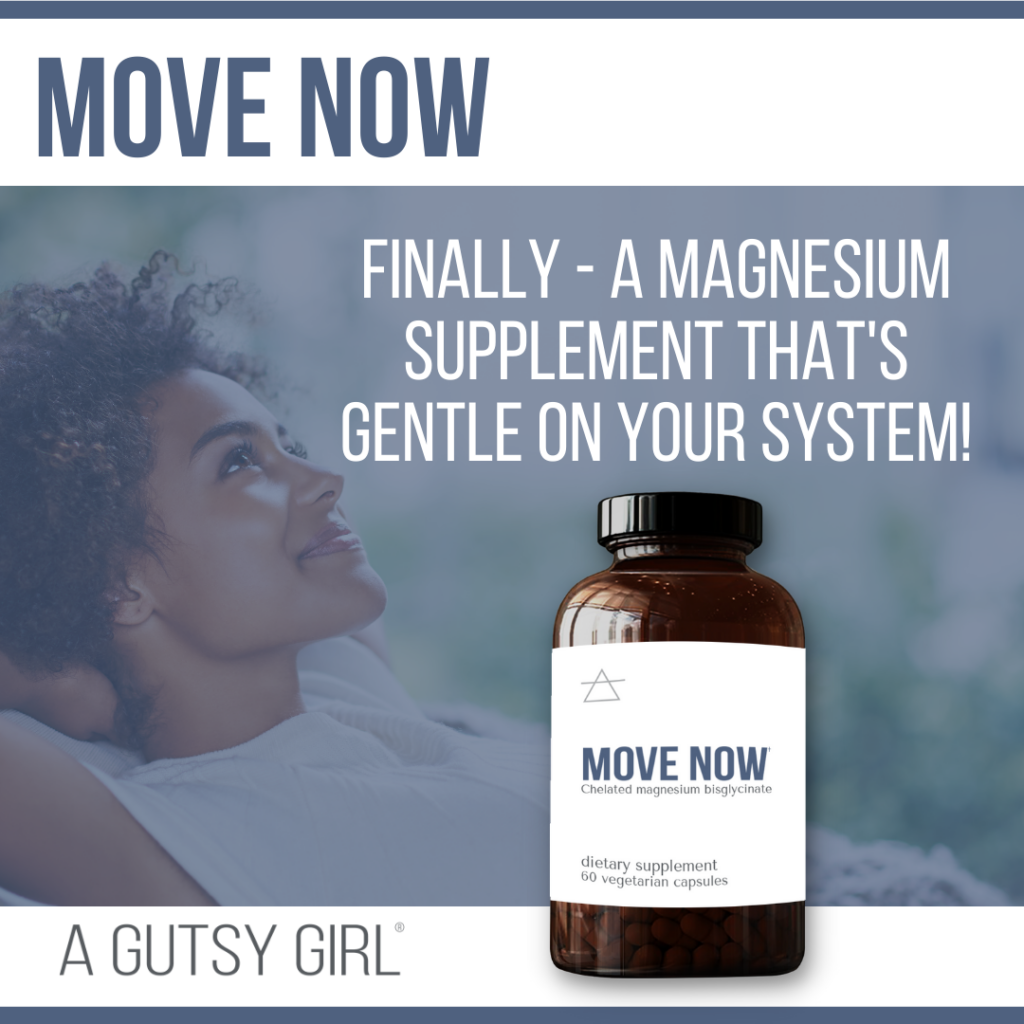
Digestive Issues and Magnesium
Oftentimes, magnesium deficiencies and digestive issues go hand in hand.
Having a medical condition such as Crohn’s, Colitis, SIBO, or any other sort of gut inflammation can decrease absorption.
Since you aren’t able to fully absorb the nutrients you need, you are far more susceptible to… you guessed it. Deficiencies.
The chelated supplement form is a good option for those with GI issues as they are lighter on your stomach and increase the likelihood of absorption.
Since many different micronutrients come in this form, it can be an easy way to ensure you are getting enough vitamins and minerals.
Talk to your healthcare practitioner about switching over to chelated forms of supplements for the added boost you may need.
Check out THIS podcast episode for more information about micronutrients and overall deficiencies.
Magnesium Overdose
As with anything, it is possible to overdo it. While it is extremely hard to overdose on magnesium, it is still possible.
Most individuals will rarely encounter issues with magnesium, however, those with kidney disease are at the highest risk.
Because excess magnesium is excreted via urine, if the kidneys are not functioning properly magnesium homeostasis can be disrupted. This can cause overdose symptoms such as altered mental state, irregular heartbeat, and trouble breathing.
Since magnesium is extremely hard for the average person to overdose on, don’t be worried. But as always, talk to a practitioner before starting a new supplement, and be mindful of the amount you are taking.
And that’s it.
Magnesium = one of the simplest ways to get your energy, sleep, and mood back.
While magnesium won’t solve everything, it definitely will help get your body on the path to healing.
More from A Gutsy Girl
Want to learn even more about the gut and ways to heal it?
Get all my resources in one today via the Master Gut Healing Resources Bundle HERE.

- Welcome to A Gutsy Girl Podcast
- Hang out on Instagram
- BFF’s on YouTube
- Resource: The Master Gutsy Spreadsheet
- Rated-G Email Club
Wrap Up
Time to wrap this up. As always, a huge goal for this show is to connect with even more people. Feel free to send an email to our team at podcast@agutsygirl.com. We want to hear questions, comments, show ideas, etc.
Did you enjoy this episode? Please drop a comment below or leave a review on Apple Podcasts.
If you liked this episode, you might also enjoy:
- Types of Magnesium {Your Master Guide}
- Magnesium, Constipation and Digestion
- Cellular Healing {+ Diet Food List} {Episode 56 with Paola Xhuli}
Xox,
SKH
Janie Greene is

